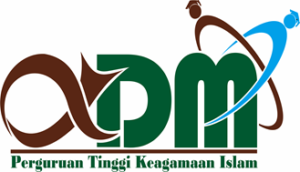Integration of DBSCAN Cluster Analysis with Multigroup Moderation Path Analysis
Abstract
Keywords
Full Text:
PDFReferences
[1] A. A. R. Fernandes and Solimun, Analisis Regresi dalam Pendekatan Fleksibel: Ilustrasi dengan Paket Program R. UB Press, 2021.
[2] Solimun, A. A. E. Fernandes, and Nurjannah, Metode Statistika Multivariat Pemodelan Persamaan Struktural (SEM) Pendekatan WarpPLS. UB Press, 2017.
[3] S. Nugroho, Statistika Multivariat Terapan. UNIB Press, 2008.
[4] I. D. Id, A. Astrid, and E. Mahdiyah, “Modifikasi DBSCAN (Density-Based Spatial Clustering With Noise) pada Objek 3 Dimensi,” Jurnal Komputer Terapan, vol. 3, no. 1, pp. 41–52, 2017, [Online]. Available: http://jurnal.pcr.ac.id
[5] E. T. K. Dewi, A. Agoestanto, and S. Sunarmi, “Metode Least Trimmed Square (LTS) Dan Mm-Estimation Untuk Mengestimasi Parameter Regresi Ketika Terdapat Outlier,” UNNES Journal of Mathematics, vol. 5, no. 1, pp. 47–54, 2016.
[6] T. N. Tran, K. Drab, and M. Daszykowski, “Revised DBSCAN algorithm to cluster data with dense adjacent clusters,” Chemometrics and Intelligent Laboratory Systems, vol. 120, pp. 92–96, Jan. 2013, doi: 10.1016/j.chemolab.2012.11.006.
[7] P. B. Nagpal and P. A. Mann, “Comparative Study of Density based Clustering Algorithms,” Int J Comput Appl, vol. 27, no. 11, pp. 44–77, Dec. 2011, doi: 10.5120/3341-4600.
[8] S. U. Rehman, S. Asghar, S. Fong, and S. Sarasvady, “DBSCAN: Past, present and future,” in The Fifth International Conference on the Applications of Digital Information and Web Technologies (ICADIWT 2014), IEEE, Feb. 2014, pp. 232–238. doi: 10.1109/ICADIWT.2014.6814687.
[9] S. Solimun, A. A. R. Fernandes, I. Rahmawati, R. Isaskar, L. Muflikhah, and F. L. N. Rasyidah, “Cluster Integration Path Analysis to Model PT Pelindo II’s Market Mapping,” International Journal of Circuits, Systems and Signal Processing, vol. 15, pp. 1833–1841, Jan. 2022, doi: 10.46300/9106.2021.15.198.
DOI: https://doi.org/10.18860/cauchy.v10i1.29847
Refbacks
- There are currently no refbacks.
Copyright (c) 2025 Hafizh Syihabuddin Al Jauhar, Solimun Solimun, Rahma Fitriani

This work is licensed under a Creative Commons Attribution-ShareAlike 4.0 International License.
Editorial Office
Mathematics Department,
Universitas Islam Negeri Maulana Malik Ibrahim Malang
Gajayana Street 50 Malang, East Java, Indonesia 65144
Faximile (+62) 341 558933
e-mail: cauchy@uin-malang.ac.id

CAUCHY: Jurnal Matematika Murni dan Aplikasi is licensed under a Creative Commons Attribution-ShareAlike 4.0 International License.




-CAUCHY26.png)
